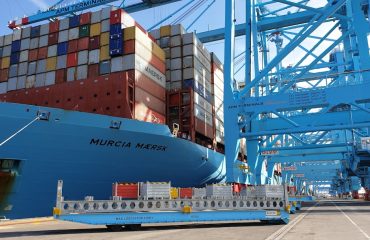In today’s dynamic business landscape, standing still is equivalent to falling behind. The ability to adapt, innovate, and consistently improve is no longer a competitive advantage—it’s a necessity for survival. This is where a culture of continuous improvement, often referred to as Kaizen, comes into play. This blog post delves into the core principles and practical strategies for fostering a thriving culture of continuous improvement within your organization.
1. Understanding the Foundation: What is Continuous Improvement?
Continuous improvement, at its heart, is a philosophy dedicated to the ongoing pursuit of excellence. It’s not about making massive, disruptive changes overnight; instead, it focuses on small, incremental improvements made consistently over time. This iterative approach allows organizations to identify inefficiencies, address bottlenecks, and enhance processes gradually, leading to significant overall gains in productivity, quality, and efficiency. Kaizen, a Japanese term meaning “change for the better,” embodies this philosophy perfectly. It emphasizes the collective contribution of every team member, fostering a sense of ownership and shared responsibility for improvement.
The key principles of continuous improvement include:
- Customer focus: Improvements are driven by the needs and expectations of customers.
- Data-driven decision making: Decisions are based on evidence and analysis, not assumptions.
- Process orientation: Focus is placed on optimizing workflows and eliminating waste.
- Teamwork and collaboration: Improvement initiatives are collaborative efforts involving all stakeholders.
- Continuous learning and adaptation: Organizations constantly learn from their experiences and adapt their approaches.
2. Cultivating a Culture of Open Communication and Feedback
A culture of continuous improvement cannot thrive in an environment of silence and fear. Open communication is paramount. Employees at all levels must feel comfortable sharing their ideas, concerns, and suggestions for improvement without fear of retribution. This requires establishing clear channels for feedback, such as regular team meetings, suggestion boxes, anonymous surveys, and open-door policies. Furthermore, management must actively solicit and respond to feedback, demonstrating that their input is valued and acted upon. This fosters a sense of trust and psychological safety, encouraging employees to actively participate in the improvement process.
Implementing regular feedback mechanisms, such as 360-degree reviews or peer-to-peer feedback sessions, can significantly enhance communication and identify areas needing improvement. Creating a safe space for constructive criticism is crucial; focusing on solutions rather than blame is essential for fostering a positive and productive environment.
3. Empowering Employees: The Key to Sustainable Improvement
Continuous improvement is not a top-down initiative; it’s a collaborative endeavor. Empowering employees to identify and implement improvements is crucial for its success. This means providing them with the necessary training, tools, and autonomy to make a real difference. Delegating authority, providing opportunities for skill development, and recognizing and rewarding contributions are key elements in fostering employee empowerment. When employees feel valued and trusted, they are more likely to take ownership of their work and actively seek opportunities for improvement.
Implementing initiatives such as Kaizen events (focused workshops for process improvement) or providing employees with the authority to stop the production line if they identify a potential safety hazard are excellent examples of empowerment. By investing in their development and granting them decision-making power, organizations can unlock the full potential of their workforce and drive significant improvements.
4. Measuring and Tracking Progress: Data-Driven Improvement
While the spirit of continuous improvement is about ongoing progress, it’s crucial to measure and track that progress to ensure effectiveness. Establishing key performance indicators (KPIs) allows organizations to monitor the impact of improvement initiatives and identify areas where further attention is needed. These KPIs should be aligned with the overall strategic goals of the organization and should be regularly reviewed and adjusted as needed. Data-driven decision making is essential for ensuring that resources are allocated effectively and that improvement efforts are focused on the areas that will yield the greatest impact.
Utilizing data visualization tools to present progress clearly and concisely is crucial. Regular reporting and analysis of KPIs should be incorporated into organizational processes to maintain transparency and accountability. This data-driven approach ensures that the continuous improvement journey is not only sustained but also optimized for maximum effectiveness.
5. Building a Culture of Learning and Adaptation
Continuous improvement is a journey, not a destination. Organizations must embrace a culture of learning and adaptation to continually refine their approaches and stay ahead of the curve. This involves fostering a learning environment where mistakes are viewed as opportunities for growth, rather than failures to be avoided. Regular training and development programs, access to relevant resources, and a culture of knowledge sharing are essential elements in cultivating this learning culture. Organizations should encourage experimentation and innovation, recognizing that not all initiatives will be successful, but that the learning gained from both successes and failures is invaluable.
Post-implementation reviews, where teams analyze the results of improvement initiatives and identify lessons learned, are crucial for continuous learning. These reviews should not only focus on quantifiable results but also on the process itself, identifying areas for improvement in the implementation approach. By embracing a culture of continuous learning and adaptation, organizations can ensure that their continuous improvement journey remains dynamic and effective.
By embracing these principles and strategies, organizations can cultivate a thriving culture of continuous improvement, driving sustainable growth and achieving lasting success. The journey to Kaizen is a continuous process, requiring consistent effort and commitment, but the rewards are immeasurable.
SEO-Friendly Tags:
- Continuous Improvement
- Kaizen
- Lean Management
- Process Improvement
- Organizational Culture




